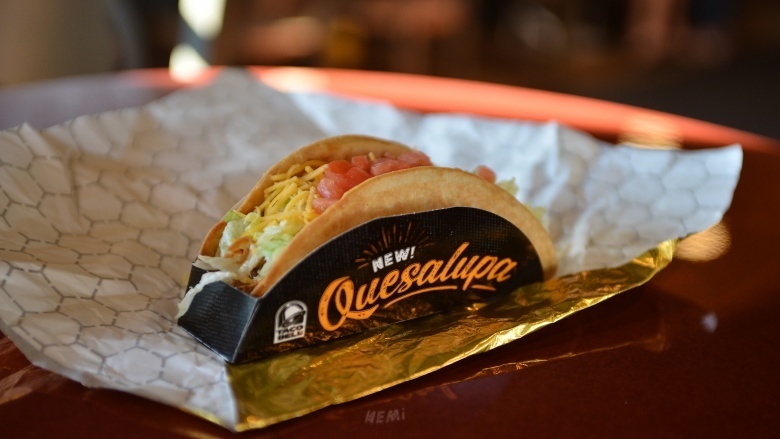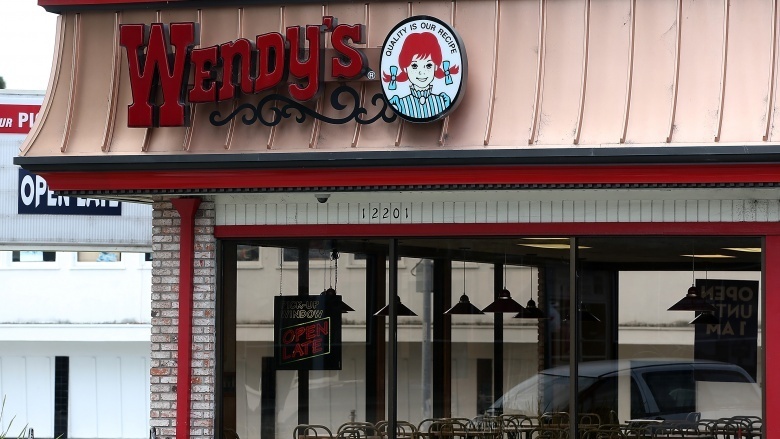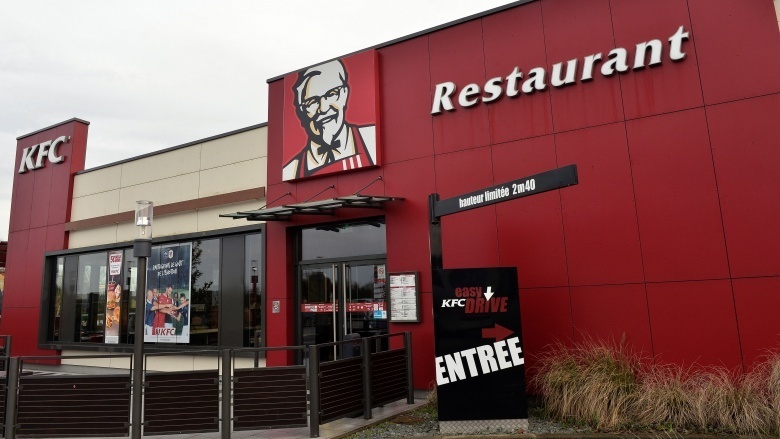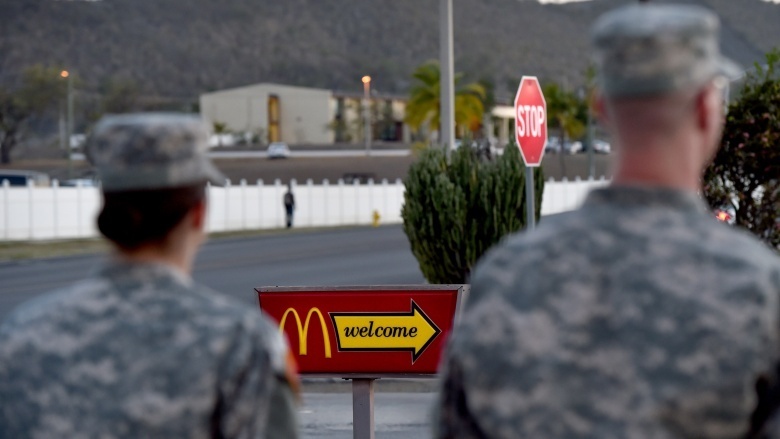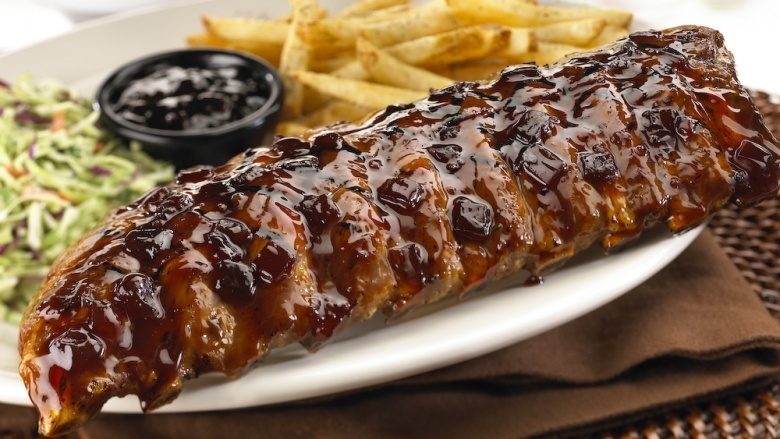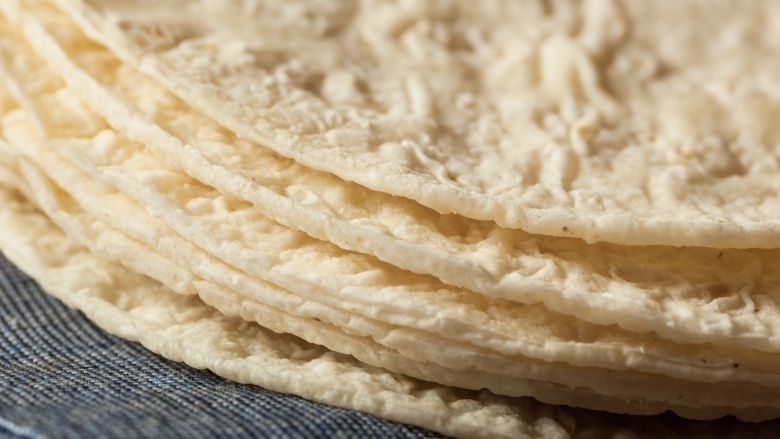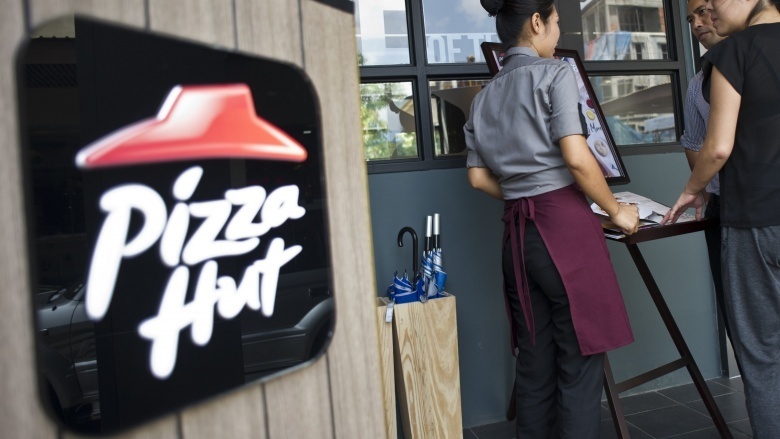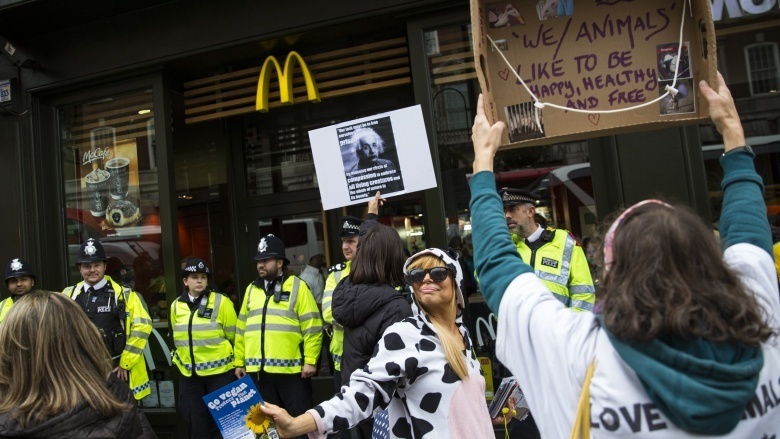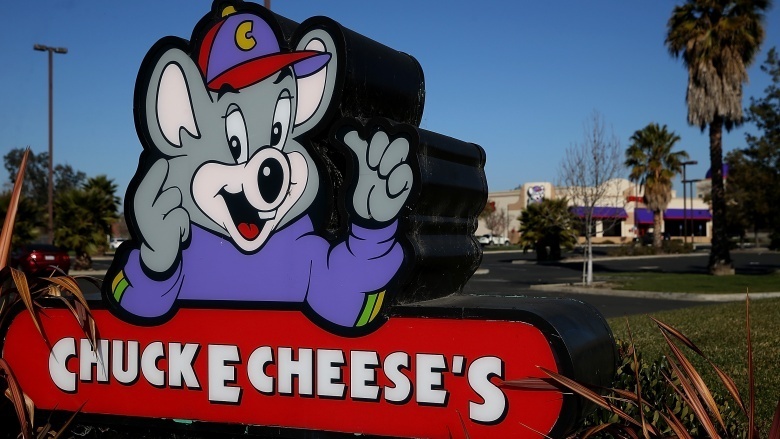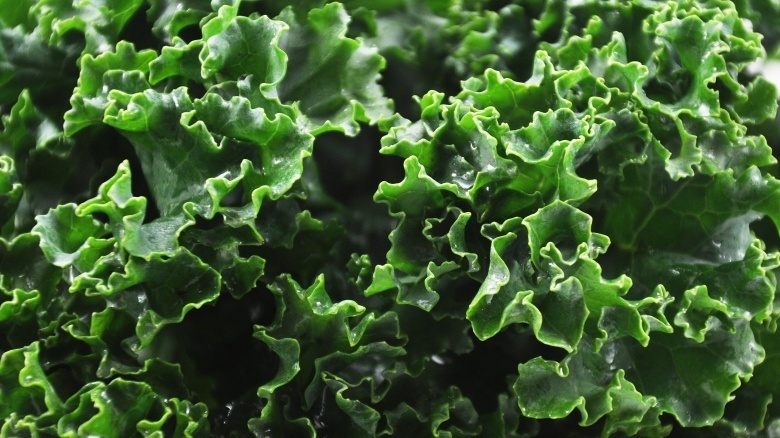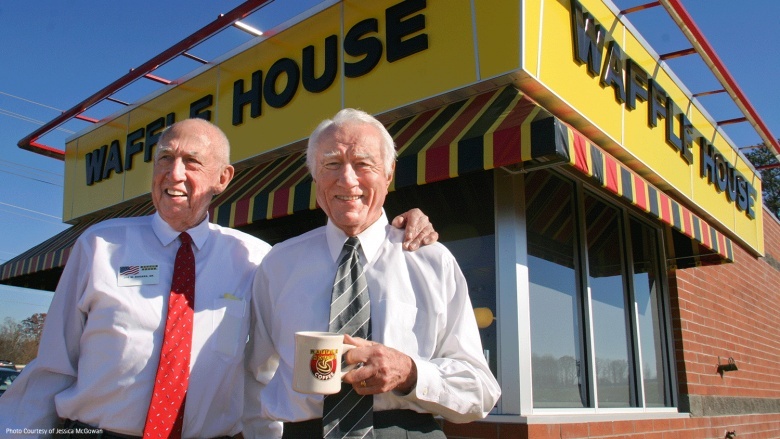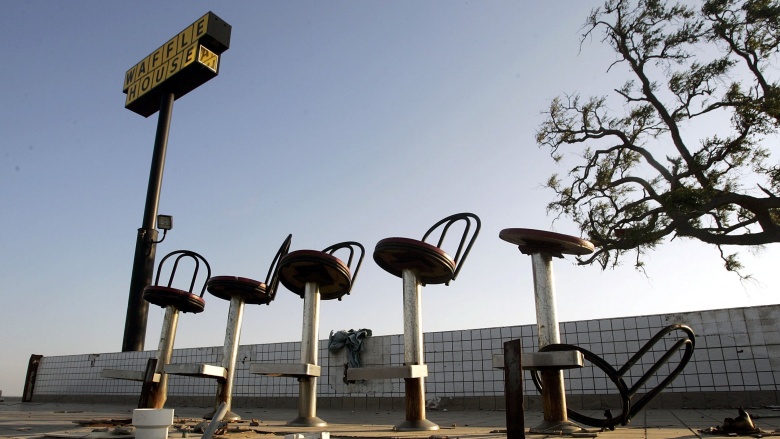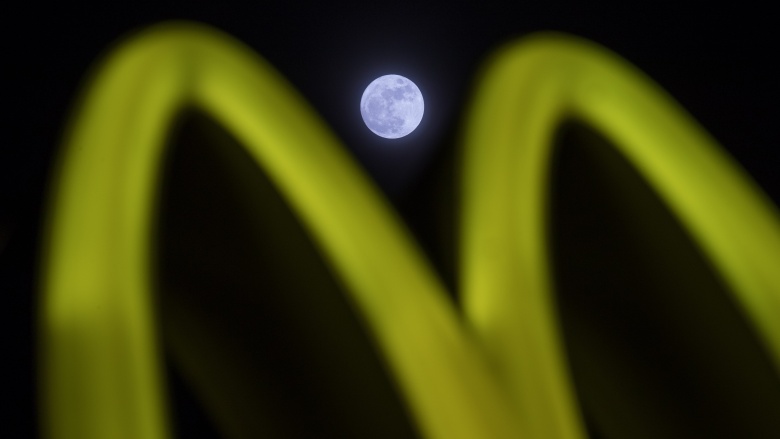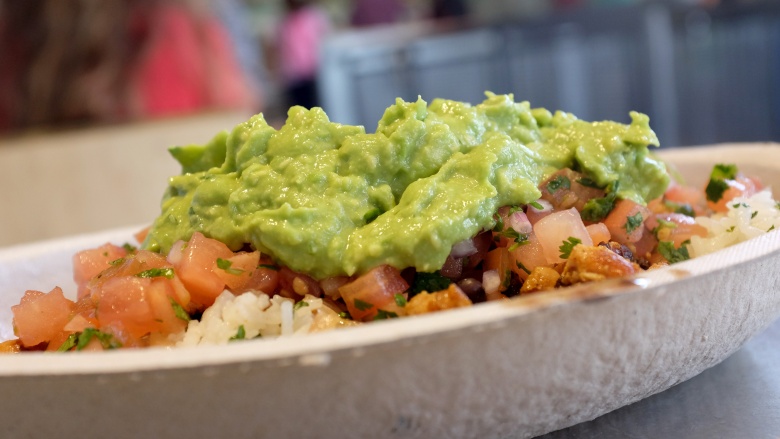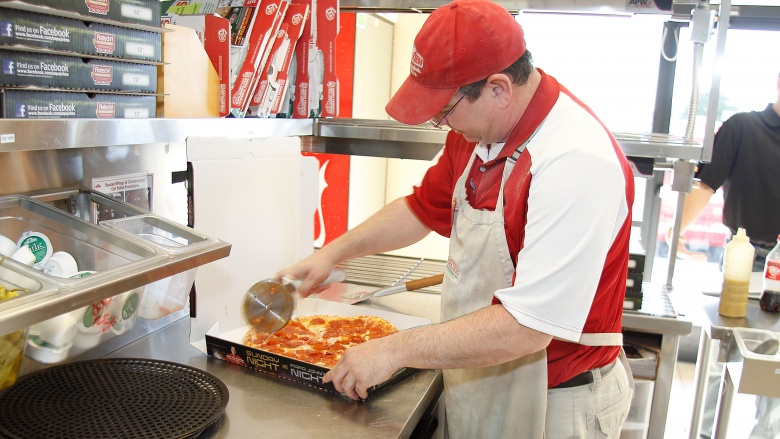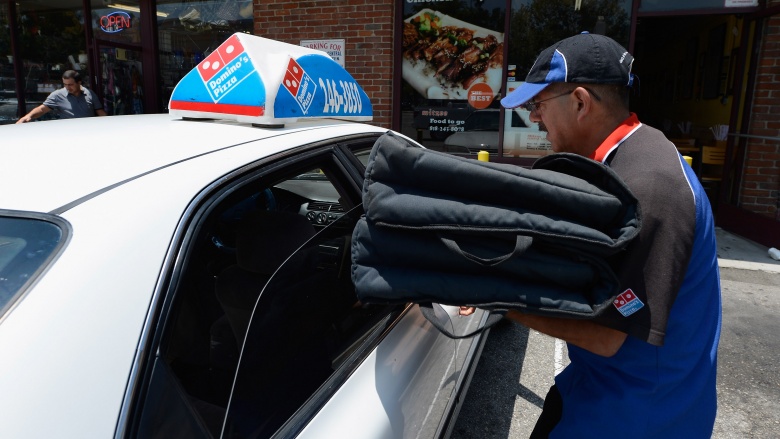Bizarre Restaurant Facts That Are Hard To Believe
A lot goes on behind the closed swinging doors of a restaurant kitchen. Some of it you'd want to know, but some of it might have you eating in for the rest of forever. When it comes down to it, restaurants are run by people who are no less human (or strange) than the rest of us, and that makes for some pretty bizarre stories that go along with your favorite fast food joints and eateries. From the unlikely and the bizarre to strange partnerships and surprising expenses, these trivia tidbits will make you think a bit differently about your tried-and-true favorites.
Taco Bell advertises its 'American' menu at its Mexican locations
It's no secret that the U.S. does food differently. Whether it's Chinese or Mexican, U.S. restaurants will put their own spin on things to make them hit all the right spots in the American palate. Just how different can it be? Pretty different.
In 2007, Taco Bell opened its first restaurants south of the border after a 15-year absence. Their slogan was, "Es otra cosa" which means "It's something else." That's not entirely a glowing review of their own product, and it sounds like something you'd say when you can't really come up with anything nice. Taco Bell didn't even call its tacos "tacos" because they're so far from traditional tacos that they might have been laughed out of Mexico. Taco Bell calls tacos sold in Mexico "tacostadas," combining "taco" and "tostada." Locations banked on their American image to present something different to Mexican diners, adding ice cream and fries (topped with cheese, tomatoes, and ground meat) to their menu.
KFC and Wendy's were all tied up
Before he hit it big, Colonel Sanders went door-to-door selling his fried chicken recipe. One of those doors he knocked on belonged to Hobby House, which was then employing a head cook named Dave Thomas. Yep, Dave Thomas of Wendy's fame.
When Hobby House bought the recipe and became KFC, Thomas jumped on board and put forward some really good ideas. He created the chicken bucket sign, the red-and-white striped logo, and the idea of Colonel Sanders as a mascot front-and-center for commercials. In 1962, KFC restaurants in Columbus, Ohio, were struggling, and KFC promised that if Thomas resurrected the franchises, they'd pay him with 45 percent ownership in each location. Thomas did turn them around, then he cashed out. When he sold his interest in the franchises back to KFC, it netted him enough money to start his own restaurant chain: Wendy's. He took the $1.5 million and opened his first store in the same city as the KFC franchises he'd saved.
KFC is Japan's go-to place for Christmas dinner
Christmas in Japan isn't a thing, at least, not like the Western world thinks of it. Only about 1 percent of Japanese identify as Christian, and the idea of Christmas hasn't caught on. What has caught on is heading to KFC for Christmas dinner.
It all started in 1974, after a group of overseas visitors couldn't find a turkey dinner. The closest thing was KFC, so yeah, not very close. Anyway, it kicked off a massive marketing campaign, and "Kurisumasu ni wa kentakkii!" ("Kentucky for Christmas!") was born only four years after the country's first KFC opened in Nagoya. Today, it's so popular that people spend around $40 for a Christmas dinner (complete with champagne and cake), and many people order their dinners months ahead of time to skip the hourslong wait times. There's still a huge Christmas campaign, and when the holiday does finally come it's all hands on deck from back office staff to the highest of the high. Rather than any kind of religious holiday, it's become a weird sort of celebration of something that's seen as fundamentally American.
Cuba's only McDonald's is in Guantanamo Bay
McDonald's has tens of thousands of restaurants, and no matter where you are in the world you'll likely find the Golden Arches somewhere nearby. Unless you're in Cuba. There's only one in Cuba, but you don't want to go there; it's in Guantanamo Bay.
This particular McD's is only for personnel working on the base, and for a long time that included lawyers who were visiting their clients. In 2015, they put an end to the practice of lawyers bringing those clients something from the nearby restaurant, which went over about as well as you'd expect. The facility cited health and safety concerns, while lawyers were less than thrilled about being forbidden from bringing in a little bit of comfort food.
Digging up some more information on this high-security fast food joint isn't easy, but it was reported in 2009 that they were looking for someone to fill an assistant manager position. ABC News found that the location had been open since 1986, and that it was owned and operated by an independent franchisee that saw a big opportunity serving a population of 6,000 people that live on location.
TGI Fridays was originally a singles' bar
It's a good family restaurant and it wants to be the perfect place to celebrate the end of the week. But it also kick-started something else: public mixing of men and women at a bar.
Alan Stillman opened the first location in 1965, and he mainly did it so he could meet girls. Specifically, he wanted to meet airline stewardesses, so the first TGI Fridays was opened next to an apartment building that was so full of single airline stewardesses that it was known as the Stew Zoo. At the time, the only way to meet them would be to go to a private cocktail party. Co-ed drinking and mingling still didn't happen in public, and while the idea of the private party is all well and good, the idea of a public place where people could mingle and meet is even better.
Stillman took the idea and made it welcoming and friendly for everyone, filling the space with furnishings that gave it a domestic air. The decor included its trademark ferns, and the ferns caught on, with countless imitators who attempted to channel the same friendly, co-ed drinking atmosphere now called "fern bars." The entire concept was such a hit that a second location followed only two years later, which is pretty good considering Stillman borrowed $5,000 from his mother to open the first one.
Taco Bell revolutionized space food
Taco Bell is probably either one of your top secret guilty pleasures or your worst nightmare. Either way, it's probably high on the list of foods you don't want to eat before heading off on a long car trip. So why on earth would you think that Taco Bell and NASA would go hand in hand?
It turns out that Taco Bell (somewhat) changed the way astronauts eat in space. Everyone's familiar with the freeze-dried space food, but astronauts are also allowed to pick some special, fresh foods to take with them, as long as they meet certain criteria. That includes not needing to be refrigerated and having a decent shelf life. Quite a few astronauts have opted to take sandwiches along. The problem's probably pretty obvious: crumbs in zero-G? No, thanks! That's when astronaut Jose Hernandez pitched the idea of using tortillas instead of bread. Crumb problem solved!
It was a pretty brilliant solution, and tortillas were sent to space. Fresh tortillas don't have a very long shelf life, though, and for missions lasting longer than a few months, they needed another solution. Enter: Taco Bell. The fast food giant had the resources to develop and manufacture a tortilla that met all of NASA's needs. It introduced a tortilla that could last up to a year with no ill effects or change in taste and quality. Taco Bell became NASA's go-to tortilla supplier, and it still supplies the International Space Station with all the tortillas they need.
Pizza Hut once delivered to the International Space Station
And speaking of the International Space Station, did you know that Pizza Hut once delivered there? Next time you call to order a pizza and they say you're out of their delivery range, remind them of the heights they once attained!
In 2001, Pizza Hut sent a pizza to Yuri Usachov on the ISS in possibly the most expensive pizza delivery run ever, as it cost the pizza company a staggering $1 million. The pizza hitched a ride on a mission to restock the ISS, and even though salami had to be substituted for pepperoni due to concerns over shelf life, the special delivery still got the thumbs-up when it arrived.
The longest legal trial in English history involves McDonald's
England is an ancient country full of history, but the longest legal case on their books? McDonald's v. London Greenpeace.
London Greenpeace (which is similar to but not associated with the other Greenpeace), wrote a scathing expose in 1986. The leaflets took aim at everything from McDonald's environmental practices to the conditions its animals were raised in, so McDonald's hit back with a libel suit. Along the way, they amassed a legal bill of about $10 million. The people they were suing? One was a 39-year-old bartender who earned less than $100 a week; the other was an unemployed postal worker who spent his earnings raising his 4-year-old son. Their defense was mostly from volunteers, and the case dragged on ... and on ... and on. On November 1, 1996, it officially became the longest court case in English history.
The case itself was massive, with more than 130 witnesses, 40,000 pages of evidence, and another 20,000 pages of transcripts. On June 17, 1997, the court decided that while most of the claims were exaggerations, there was some truth to parts (like McDonald's false claims about nutritional information), but the campaigners were still ordered to pay up. (They refused, and McDonald's did not try to collect.) Shockingly, the case kept going with appeals and more appeals until 2005, when it bizarrely sputtered and died without much resolution.
Chuck E. Cheese's and Atari were created by the same person
If you're of a certain age, chances are pretty good that Chuck E. Cheese's is firmly entrenched in your childhood memories. And why not? There were games and pizza galore, and what more is childhood, really? But it isn't a coincidence those two things came together at the restaurant. Chuck E. Cheese's was founded by the brains behind another world-changing creation: Atari.
Nolan Bushnell created Chuck E. Cheese's to take full advantage of the earning potential of the games that he was putting out there. Selling a cabinet netted him between $1,500 and $2,000, but that machine could collect upward of $20,000, one quarter at a time, over its lifetime. Combine that with food, and you had another reason to keep people there longer. Why pizza? Get it right the first time, and it's a formula that's hard to screw up.
The giant animatronics that retrospectively seem a bit creepy were all part of the plan to lure parents in the door. How could you go wrong with a place that included this kind of entertainment, guaranteed to keep your kids out of trouble when they weren't playing games or shoving pizza in their faces? It was a win-win all around, but it wasn't originally supposed to have a mouse at the center. The costume Bushnell originally bought was a coyote, and it was going to be Coyote Pizza. It was only when he consulted with the designers of his animatronics that he found out there was a shipping error, and they'd gotten a giant rat. Rats and restaurants don't mix, so marketing convinced Bushnell to turn Rick Rat's Pizza into Chuck E. Cheese's.
Pizza Hut was once the top purchaser of kale
And, speaking of pizza, Pizza Hut is another one of those places that you either love or hate. You might not think of them buying much in the way of health food, but prior to 2013, they were the world's largest purchaser for an unlikely ingredient: kale.
Kale is another thing that you either love or hate, but it's recently moved up the list of healthy foods for healthy people and everyday shoppers. Most people put it in soups or salads, not pizza, so what gives? Before it became the trendy new health food, Pizza Hut used it as decoration on their salad bar. That's right, that green stuff that you might vaguely remember being on the salad bar that you hit before the main course? Kale, and lots of it.
Waffle House has a record label
Waffle House has been around for more than six decades, and over the years it's become a landmark of southern culture. Everyone loves the jukeboxes, and everyone knows they're an integral part of the Waffle House experience. What you might not know is that some of those unfamiliar songs that just don't ring a bell are a part of Waffle House's own record label.
It is, of course, called Waffle Records, and it was the brainchild of Waffle House co-founder Joe Rogers, Sr. The idea came about in the 1980s, and the goal was to supplement the songs already in the restaurant's jukeboxes with others that expanded on what they called the Waffle House experience. One of the set-in-stone guidelines was that the songs absolutely weren't to be anything close to commercials, although they were all based on what everyone from the songwriters to their customers experienced every time they sat down in any one of the country's Waffle Houses. Originally, Waffle Records was pressing vinyl 45s just like every other record that went into their jukebox, and while the methods have changed a bit with the times, they're still going strong.
Perhaps unsurprisingly, songs on the Waffle Records label make up an incredibly small percentage of the music actually played in the restaurants, and they think that's totally acceptable. Some of the songs include titles like "They're Cooking Up My Order", "There are Raisins in My Toast", and the bluegrass non-hit "Waffle House Steaks". If you're craving that Waffle House atmosphere, you can also find the songs on Amazon.
Waffle House closures are used by the government to track storm severity
Waffle House isn't just known for its music and atmosphere, it's renowned for staying open 24/7 and through the worst weather imaginable. That's led to something of an urban legend, stating that the government bases some of its relief efforts and storm tracking on whether or not Waffle Houses are able to keep their doors open.
Only this urban legend is completely true.
Waffle House has around 2,100 locations, with about 500 restaurants sitting directly in areas that are at high risk for hurricanes and hundreds more in locations that are prone to flooding and tornadoes. As they're on the front lines for all kinds of natural disasters, the chain has become known for providing a warm, dry place that first responders can get a hot meal. They take it incredibly seriously, maintaining a mobile command center that can be dispatched to the places hardest hit, along with portable generators that ensure they can get the power on ASAP. Even their employees are trained in crisis management, and their goal is to be out of service no more than a few hours in even the worst of conditions.
In 2009, Craig Fugate transferred from the Florida Emergency Management Division to FEMA, and he brought with him his "Waffle House Index". It was a map designed to help determine how badly hit areas were, and it's most useful in judging how well relief efforts are going and what places need more aid. There's only three colors on the Waffle House Index, with green meaning everything is operational, yellow meaning they're up and running but on generator power, and red just means "apocalypse." In 2012, Waffle House started reporting directly to FEMA, helping them to determine just where their resources are needed the most.
You're never more than 115 miles from a McDonald's
Rest assured, if you're in the lower 48 states of the US and you happen to get a craving for a Big Mac, you're not too far away. In fact, you're never more than 115 miles away, and that's the worst case scenario sort of thing.
According to Data Pointed, their map of every single McDonald's location shows a pretty full map, lit with bright lights that mark the locations of everyone's go-to fast food restaurant. They did some looking, and found that the "McFarthest" point on the map — indicating the farthest away from McDonald's you could possibly be — was a spot out in the desert of northern Nevada. According to them, the location is 115 miles away from McD's, and honestly, it's pretty far away from just about everything. Data Pointed writer Stephen VonWorley did what any other awesome person would do, and he ordered 5,000 calories worth of McD's food and headed out to eat it in the McFarthest Spot. He crossed a state line and onto gravel roads, past antelope and to his campsite, ultimately forced to take a mountain bike the rest of the way.
In case you're wondering, the McFarthest Spot has been christened with a spilled Coca-Cola Classic and a handful of leftover fries.
Jason Mraz supplies some of Chipotle's avocados
Chipotle is dedicated to serving only fresh ingredients, so much so that they continuously refuse to put queso on the menu in spite of popular demand. Part of that mission statement includes going through the trouble of sourcing local, fresh ingredients, and if you happen to stop in and have some guacamole at one of their southern California restaurants, chances are you're eating avocados from the avocado farm of Grammy-winner Jason Mraz.
Mraz bought the property in 2006, and when he's not on tour he lives at the farm. According to one interview, he became an avocado farmer accidentally, buying the property without realizing that the 5 acres of trees were fully mature avocado trees. The grove produces around 30,000 pounds of avocados every year, and even though that sounds like a lot, he's one of Chiptole's smallest suppliers. It takes 70 avocados to make a single batch of guacamole, and considering each restaurant makes as many as four batches a day, that's a lot of avocados.
His discovery of the trees fell right in line with a newly adopted vegetarian lifestyle, and he went the extra step of hiring an organic farmer to tend the grove, and make the change from traditional farming to all organic. Even though 5 acres might seem like a lot of trees, some of Chipotle's larger suppliers have groves that cover 2,500 acres, and it's all to supply the average of 231,000 avocados they need every day.
Pizza Hut vs. Papa John's: the court case
In 1998, the two pizza giants got caught up in what might be one of the most bizarre restaurant lawsuits ever. Pizza Hut claimed that Papa John's "Better Ingredients. Better Pizza." campaign was nothing short of false advertising, and it was a high point in a long-standing feud between the two pizza-makers.
The case went to court in 1999, and experts were called to help determine whether or not Papa John's so-called "better ingredients" really did make a difference in the final product. According to one key witness called by Pizza Hut, customers absolutely couldn't tell whether dough was made with tap water or with Papa John's preferred method of fermentation. Others said the same thing about the sauce, testifying that it didn't matter if sauce was made from canned tomatoes or fresh.
The case rested in the details, and Pizza Hut claimed Papa John's was practicing something called "puffery", which essentially amounted to basing their entire advertising campaign on subjective claims that were presented as hard facts. The jury ruled in favor of Pizza Hut, but it wasn't over yet. They went back to court in 2000 on appeal, with Papa John's insisting they couldn't be stating anything even slightly misleading, as it was all meant to be a matter of opinion anyway. This time, they won.
When Pizza Hut tried to appeal, they were denied and the two companies were left to duke it out outside of the courts.
Domino's 30-minute delivery guarantee has caused numerous deaths and injuries
In 1984, Domino's hit on a pretty attractive idea, based on the fact that when people got a craving for pizza, they wanted that pizza sooner than later, and they wanted it tasting like it had just come out of the oven. They promised any pizzas would be delivered in 30 minutes or less, and if they failed, their customers would get a discount or, in some places, a free pizza.
There was a problem, though, and those that condemned the idea said the pressure made delivery drivers not only careless, but dangerous. In 1994, a St. Louis woman sued Domino's after being hit by a delivery driver who she (and witnesses) claimed ran a red light, leaving her with chronic back and neck pain. The jury awarded her a staggering $750,000 in damages and an additional $78 million in punitive damages, but they ended up settling out of court and dropping the 30-minute guarantee. She wasn't the first to take Domino's to court, either. In 1990, they found themselves in court after a delivery driver was involved in a car accident with a Calumet City, Illinois, woman who died in the collision.
By that time, the policy already had its outspoken critics that weren't impressed by Domino's promise to start a safe driving campaign in 1989. In spite of Domino's insistence the accidents involving their drivers weren't the direct result of the campaign, they were still investigated by the Indiana Department of Labor after the death of a 17-year-old Indianapolis driver. And when one Pittsburgh family went to court in 1985, they found evidence of at least 60 accidents that involved Domino's drivers and resulted in either fatalities or injuries.
Even though the 30-minute guarantee was dropped in the US market, it remained in effect in other areas, like South Korea. In 2011, Domino's South Korea faced a massive public backlash after the death of a 24-year-old delivery driver shed new light on three other recent deaths. In addition to the potential for fatalities, accidents and injuries, it was also said to be responsible for fostering a hostile workplace.
